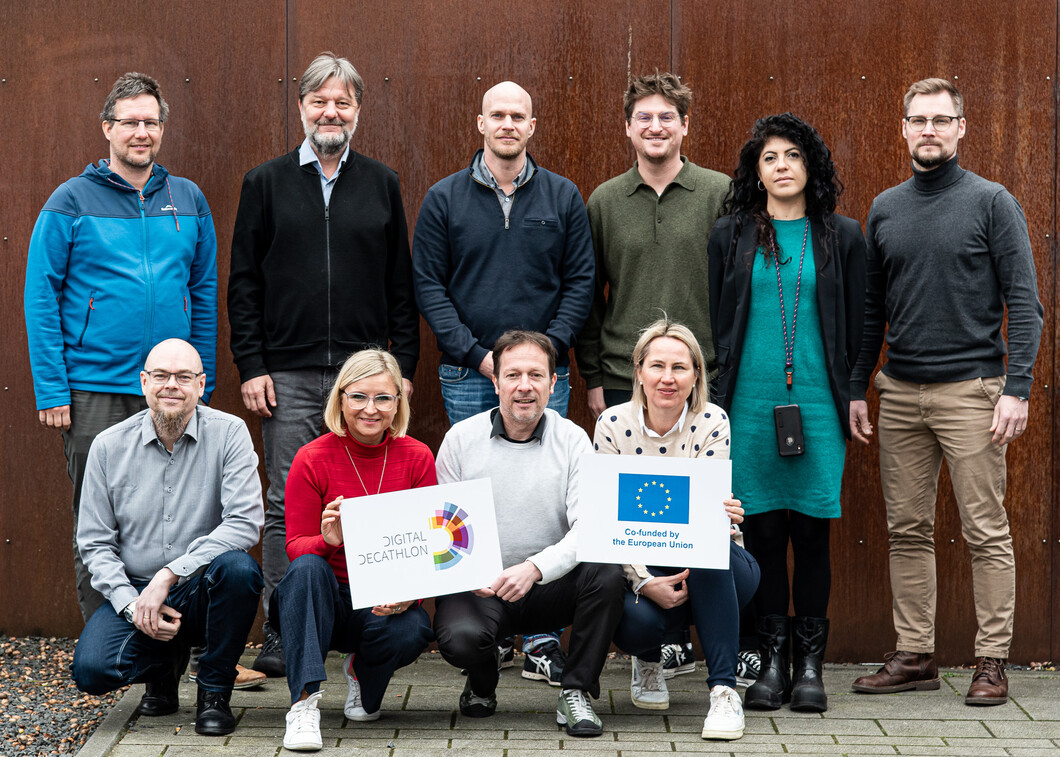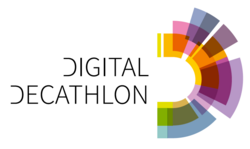Digital Decathlon
Digital Design Collaboration in higher education
Background
The digital transformation is one of the EU's top priorities. The European Parliament is helping to shape policy to strengthen Europe's capacity in new digital technologies and create new opportunities for businesses and consumers. Digital transformation should benefit everyone, put people first and offer new opportunities for business. Moreover, without digitalisation, climate protection and ecological change remain mere wishful thinking. The digital transformation also affects the construction industry and is changing an entire sector of the economy. Universities must meet this changing demand with new training offers. Building Information Modelling (BIM) plays a significant role in the digitalisation of construction. BIM is the model-based working methodology for the design, construction and operation of buildings. It is not only about building more digitally, but also about using the digital transformation to build or deconstruct better, more resource-efficient, more climate-friendly and more quality-assured.
Goal
This means that we need new, innovative ideas for a digital future at universities. The Digital Decathlon is intended to make a contribution here. It is an interdisciplinary competition for students of architecture, civil engineering and related disciplines, with the aim of training digital planning skills of the BIM method in a collaborative way. The Digital Decathlon is a unique training that offers participating students an easy introduction to digital planning and prepares them to work together in international teams - an intensive learning experience. The competition connects higher education institutions in Europe and promotes European identity, it is interdisciplinary and intercultural and opens up new horizons of knowledge, contacts and perspectives. The Digital Decathlon is based on the idea of the BIM Game, which was based and further developed as an Erasmus+ project in 2016-2019. As the Digital Decathlon, this game idea is now being internationalised, curricularly integrated, expanded into a predominantly presence-free competition event and anchored in the European higher education landscape.
Method
The competition brings students from different European countries together in one place. The meeting is designed as a symposium where knowledge about digital use cases is presented and exchanged. The meeting presents the design task of the competition and internationally mixed teams have to form to start the competition together. The cooperation takes place after returning to the home towns, decentralised and digitally and is controlled by a working platform that manages the competition. With the working platform, rules of the game will be agreed upon and procedures organised, the working platform will demand performance and guide the students through the competition phases. Learning modules will be developed and made available for self-organised learning, offering participants demand-oriented content. The competition ends at the end of the one-semester completion period in a renewed meeting of all. Here, the results are presented and evaluated by a jury. The competition is concluded with an award ceremony and the digital exhibition of the results.
The competition consists of ten disciplines, all application cases of the BIM method, which are to be carried out on a central design task. Each of the five partner organisations will take over the thematic management of two disciplines, provide learning material for them and supervise the students. In this way, the universities complement each other and complete the thematic learning offer.
Participating organisations are:
- JADE HOCHSCHULE WILHELMSHAVEN/OLDENBURG/ELSFLETH
- BERGISCHE UNIVERSITAET WUPPERTAL
- KARELIA AMMATTIKORKEAKOULU OY, Jönsuu, Finland
- UNIVERSITA DEGLI STUDI DI FIRENZE, Florence, Italy
- POLITECHNIKA WARSZAWSKA, Warsaw, Poland



